How Liebherr engines work
Liebherr engine is an internal combustion engine, mainly composed of key components such as combustion chamber, cylinder, piston, valve and crankshaft. Here is the basic working principle of a Liebherr engine:
- Intake process: When the piston moves downward, the valve in the cylinder opens and the mixture of air and fuel enters. The Liebherr engine uses a direct injection fuel system, which can inject fuel directly into the cylinder. The piston then moves upward, compressing the mixture.
- Compression process: When the piston moves upward, the valve in the cylinder is closed and the mixture is compressed into a high-pressure state. Through compression, the air and fuel in the mixture are brought closer to each other, making the fuel easier to burn.
- Combustion and expansion process: When the piston reaches its peak, fuel is injected into the cylinder at high pressure and temperature. The mixture burns rapidly under these conditions, producing gases of high temperature and high pressure. These gases push the piston downward and are converted into mechanical energy.
- Exhaust process: When the piston moves downward, the exhaust valve opens to discharge the exhaust gas generated by combustion. At the same time, the rotational motion of the crankshaft converts the linear motion of the piston into rotational motion through the connecting rod.
- Cycle repetition: After the entire working process is completed, the crankshaft continues to rotate, and the piston begins to rise again to carry out the next intake, compression, combustion and exhaust processes, thus continuously operating in a cycle.
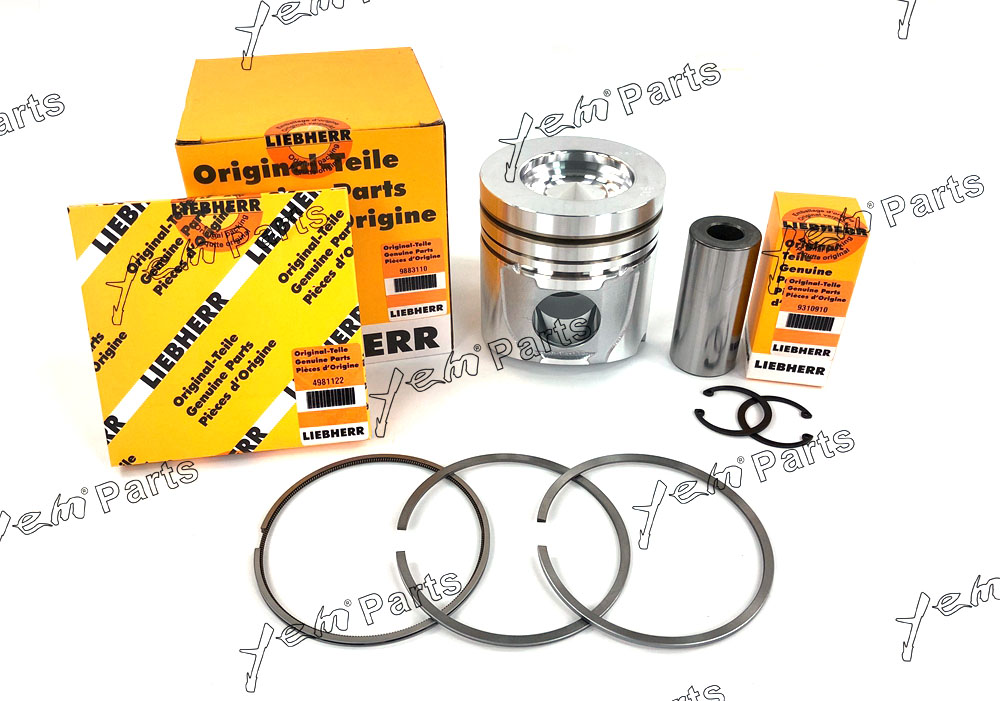
Liebherr engines use the chemical energy of fuel to convert into mechanical energy. Through the coordinated movement of the piston and crankshaft, the combustion pressure in the cylinder is converted into rotational power to drive mechanical equipment to work. Its efficiency, reliability and quality manufacturing make it widely used in various industrial and agricultural applications.
Liebherr engine Parts
Liebherr is a large multinational engineering and manufacturing company involved in many industry sectors, including automotive, construction, mining and aerospace. As an engine manufacturer, Liebherr offers a wide range of engine accessories to support the repair and maintenance of its engine products. Here are some common Liebherr engine parts:
- Pistons and piston rings
- Cylinder liner and piston pin
- Camshaft and valves
- Crankshaft and connecting rod
- Hydraulic pump and injector
- Water pump and oil pump
- Flywheel and clutch
- Air filter and fuel filter
- Engine control module and sensors
- Cooling system components such as water tanks and radiator
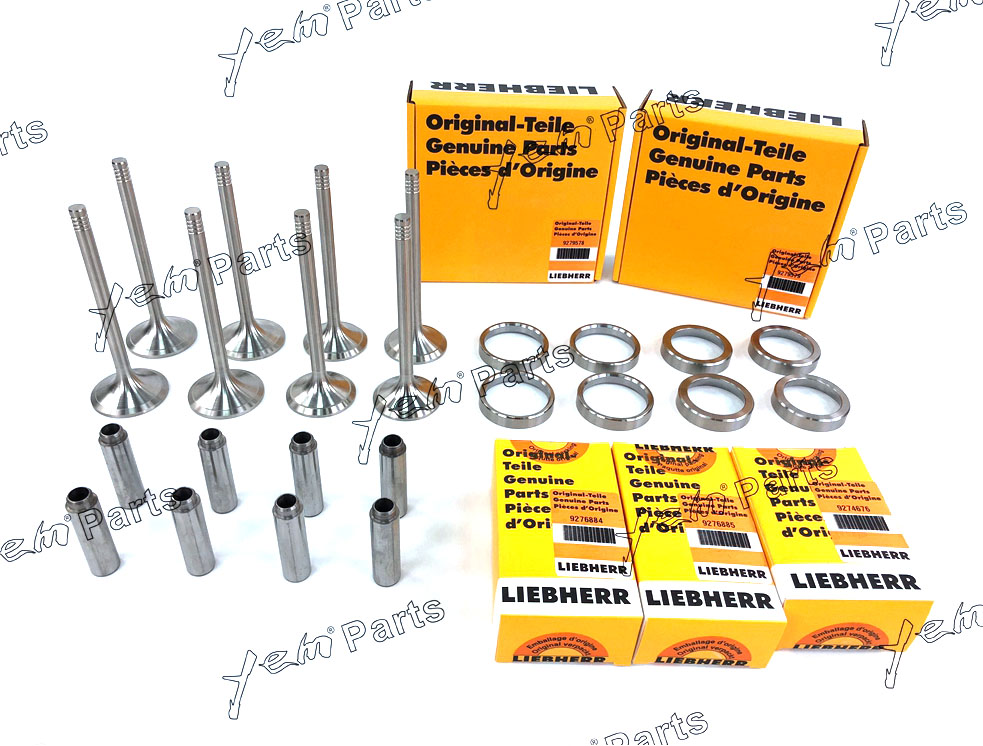
Liebherr engine troubleshooting
Troubleshooting Liebherr engines can be a complex process, depending on the specific problem and engine model. Here are some examples of common problems and troubleshooting methods:
- The engine cannot start:
- Check the fuel supply: Make sure there is enough fuel in the fuel tank and check for clogged filters in the fuel system.
- Check the battery: Make sure the battery has sufficient power and check whether the starting circuit is normal.
- Check the ignition system: Check that the spark plugs are working properly to ensure that the ignition system is functioning properly.
- The engine runs unstable or loses power:
- Check the fuel supply: Make sure there are no blockages or fuel pump problems in the fuel system, and check that the fuel injection system is working properly.
- Check the air supply: Check that the air filter is clean and make sure there are no air leaks.
- Check the ignition system: Make sure the ignition system is working properly and the ignition time is correct.
- Engine overtemperature or cooling system problem:
- Check coolant: Check coolant level and quality to make sure there are no leaks or blockages.
- Check the cooling fan: Make sure the cooling fan is running properly and check that the fan belt is tight.
- Abnormal noise or vibration:
- Check the engine supports: Make sure the engine supports are in good condition and not loose or damaged.
- Check mechanical components: Check that all connections, flywheels, crankshafts, connecting rods, etc. are tight and eliminate any abnormally worn or damaged components.
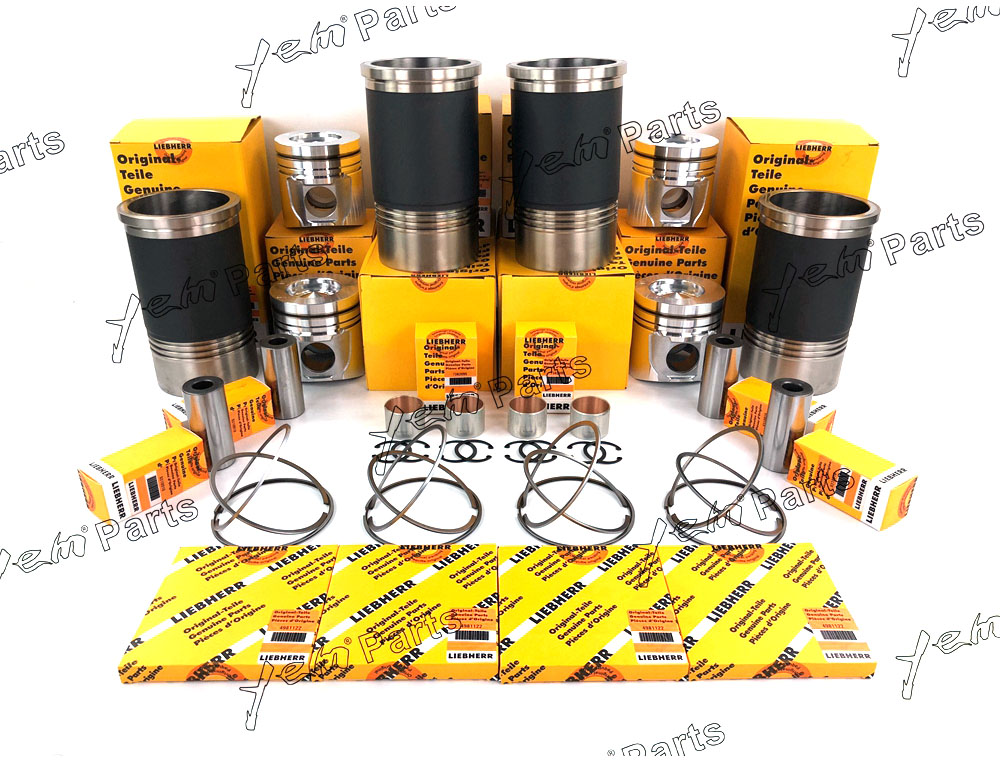
If you encounter a Liebherr engine failure and are not familiar with troubleshooting procedures, it is recommended that you ask an experienced service technician or a Liebherr authorized service center to assist in troubleshooting and repair work. This ensures that faults are correctly diagnosed and resolved to maintain engine performance and reliability.
Liebherr engine maintenance
Maintaining a Liebherr engine is crucial to ensure its optimal performance, reliability, and longevity. Here are some general maintenance tips for Liebherr engines:
- Regular Inspections: Perform routine inspections of the engine components, such as belts, hoses, filters, and connections, to check for any signs of wear, leaks, or damage. Inspect the cooling system, oil levels, and fuel system regularly.
- Oil and Filter Changes: Follow the manufacturer’s guidelines for oil and filter changes. Regularly change the engine oil and replace the oil filter to ensure clean lubrication and remove any contaminants.
- Cooling System Maintenance: Check the coolant level, concentration, and quality periodically. Flush and replace the coolant as recommended by the manufacturer. Inspect and clean the radiator and cooling system components to prevent overheating.
- Fuel System Maintenance: Keep the fuel system clean and free from contaminants. Regularly drain the water separator and replace fuel filters as needed. Use high-quality fuel, and ensure proper fuel storage and handling practices.
- Air Filter Maintenance: Regularly inspect the air filter and clean or replace it as necessary. A clean air filter prevents dust and debris from entering the engine, ensuring proper combustion and protecting internal components.
- Regular Servicing: Adhere to the recommended service intervals provided by the manufacturer. Schedule preventive maintenance and servicing with authorized Liebherr service centers to perform thorough checks, adjustments, and necessary repairs.
- Keep Records: Maintain detailed records of all maintenance and service activities performed on the engine. This helps track maintenance history, identify patterns or recurring issues, and ensures proper documentation for warranty claims.
- Operator Training: Ensure operators receive proper training on engine operation, maintenance procedures specific to the Liebherr engine model, and safe handling practices. This minimizes the risk of engine damage due to improper operation.
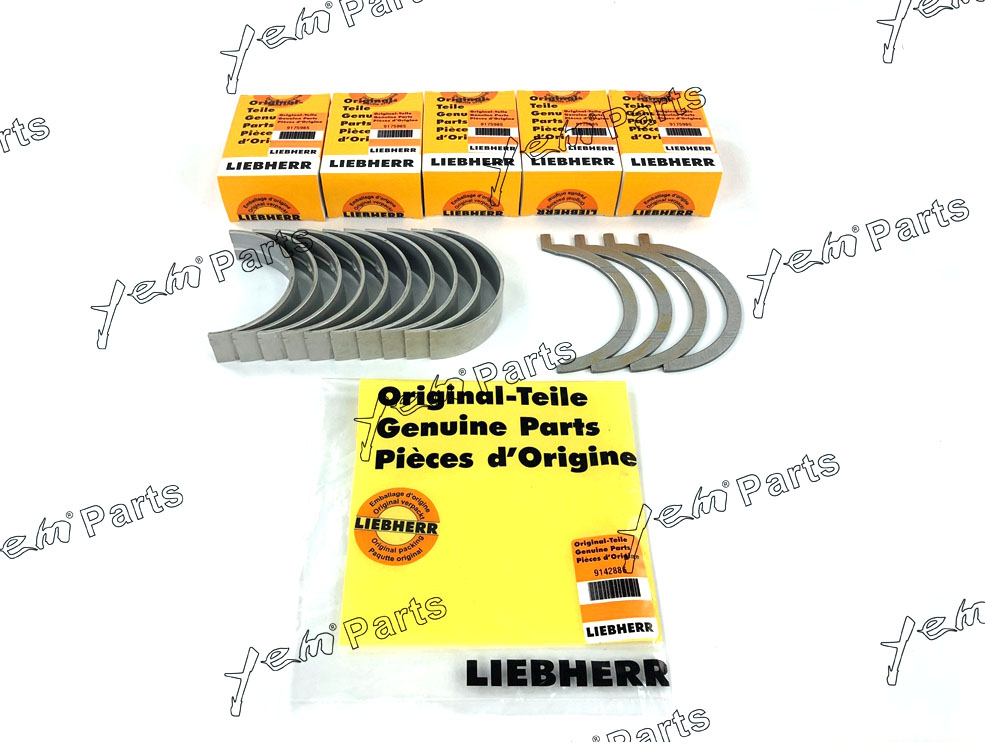
Remember, specific maintenance requirements may vary depending on the model and application of the Liebherr engine. Always refer to the engine’s manual and consult with authorized service personnel or Liebherr support for accurate and up-to-date maintenance guidelines and recommendations.
Installation and removal of Liebherr engines
Installing and removing a Liebherr engine requires careful planning, preparation, and following manufacturer guidelines. Here are some general steps to consider:
Installation:
- Prepare the workspace: Ensure you have a clean and organized area with sufficient space to safely maneuver the engine. Gather all the necessary tools and equipment.
- Read the manual: Familiarize yourself with the installation instructions provided by Liebherr. Follow the specific steps and requirements outlined for your engine model.
- Safety first: Before starting any installation work, disconnect the battery and ensure all electrical connections are properly isolated. Use appropriate safety gear, such as gloves and goggles.
- Engine placement: Carefully position the engine in the designated area, aligning it with the mounting points and ensuring proper clearance for components like the drive systems, exhaust, and cooling systems.
- Mounting: Follow the manufacturer’s instructions to properly secure the engine to its mounts. Use the specified tools, torque values, and hardware provided by Liebherr for a secure and reliable attachment.
- Connect components: Reconnect all necessary components, such as the electrical system, fuel lines, cooling hoses, exhaust system, and other relevant connections. Follow the manufacturer’s guidelines for proper routing and installation.
- Fluids and lubrication: Fill the engine with the recommended fluids, such as coolant, engine oil, and fuel. Ensure proper levels and follow any priming or bleeding procedures mentioned in the manual.
- Testing: Perform initial functional tests and inspections to ensure all connections are secure, systems are functioning correctly, and there are no leaks or abnormal noises. Address any issues or concerns before moving forward.
Removal:
- Preparation: Disconnect the battery and isolate all electrical connections. Drain fluids, such as coolant and engine oil, and prepare appropriate containers for disposal.
- Disconnect components: Disconnect all necessary components, including electrical connections, fuel lines, cooling hoses, exhaust system, and any other relevant connections. Label or document the connections to aid reinstallation.
- Unmounting: Follow the manufacturer’s instructions to safely remove the engine from its mounts. Use appropriate lifting equipment and techniques to avoid accidents or damage.
- Secure and transport: Once the engine is free from its mounts, secure it using appropriate straps or lifting devices to prevent any movement or damage during transportation.
- Clean and inspect: Thoroughly clean the engine and inspect it for any signs of damage, wear, or leaks. Document any issues and prepare for necessary repairs or maintenance.
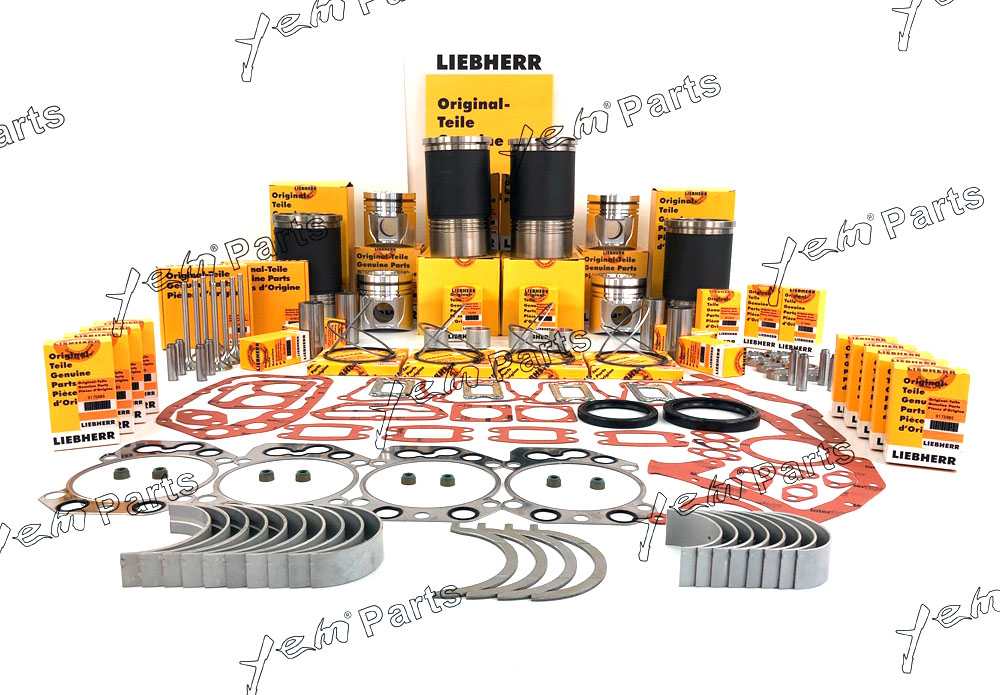
It’s important to note that these steps provide a general overview, and the specific installation and removal procedures may vary depending on the engine model, application, and any unique requirements provided by Liebherr. Always refer to the manufacturer’s manual and consult with authorized service personnel for accurate and up-to-date instructions.
Liebherr engine applications
Liebherr engines are used in a variety of applications across different industries. Some common applications for Liebherr engines include:
- Construction Equipment: Liebherr engines are often found in construction machinery such as excavators, wheel loaders, and bulldozers. These engines provide the power and reliability required for heavy-duty operations in the construction industry.
- Mining Equipment: Liebherr engines are used in mining equipment such as haul trucks, mining excavators, and drilling rigs. These engines are built to withstand challenging conditions and to provide high-performance in demanding mining operations.
- Maritime: Liebherr engines are used in various types of maritime vessels, including bulk carriers, tankers, container ships, and offshore vessels. These engines meet stringent marine emission regulations and offer efficient and reliable operation at sea.
- Rail Transportation: Liebherr engines are used in locomotives and railcars for both freight and passenger transportation. These engines provide the necessary power and performance to ensure smooth and efficient rail operations.
- Power Generation: Liebherr engines are used for power generation applications, such as in diesel generators and cogeneration systems. These engines offer reliable and efficient power solutions for a wide range of industries, including hospitals, data centers, and manufacturing facilities.
These are just a few examples of the diverse applications for Liebherr engines. The company’s engines are known for their reliability, durability, and performance, making them a popular choice across various industries.
Contact us
Thank you for your interest in YEMPARTS and our excavator parts. We have a dedicated team of experienced professionals ready to assist you with any inquiries or issues you may have regarding part identification, accessories, customer guidance, and more.
Please note that machinery engine parts can be complex, so if you have any product-related questions, we may need to contact you to gather additional information. To ensure the best results, it would be helpful if you could provide us with your model number, serial number, engine number, part number, or even pictures of your old parts.
To receive a free quotation, please leave your information by emailing us at :power@yempart.com. Our team will promptly respond to your inquiry and provide you with the necessary information.
Thank you again for considering YEMPARTS for your excavator parts needs. We look forward to serving you!
